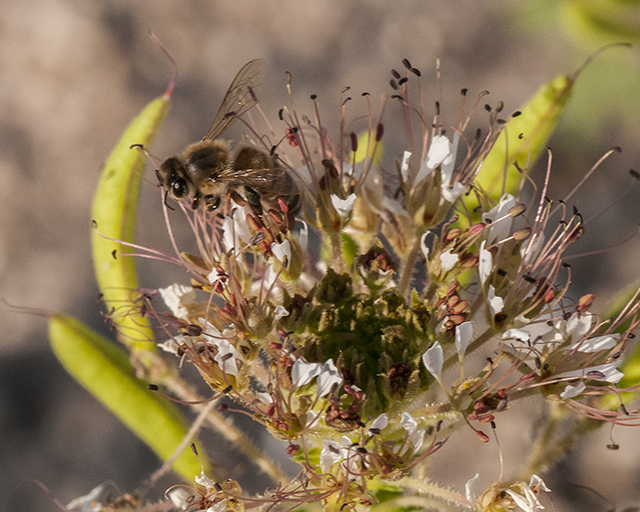Wildflowers of Southern Arizona
Redwhisker Clammyweed.
Polanisia dodecandra.
Beeplant (Cleomaceae) Family.
Duration: Annual. Nativity: Native. Lifeform: Forb/Herb. General: Annual herb, 20-80 cm tall; herbage glandular-pubescent, strong-scented. Leaves: Alternate along the stems, on petioles 1-4 cm long; blades compound with 3 distinct leaflets, the leaflets oblanceolate to oval, 1-4 cm long and 3-18 mm wide. Flowers: White, purple, and showy, in terminal racemes; sepals 4, purple-tinged, 4-5 mm long; petals 4, clawed, whitish, 1 cm long; stamens 10-20 per flower, with purple filaments, the longer ones up to 3 cm long, exserted well beyond the petals. Fruits: Capsules long and narrow, somewhat compressed, 2-3 cm long, and generally pointing upward; containing numerous brown seeds, about 2 mm long. Ecology: Found in wash bottoms and other disturbed areas, from 1,000-6,500 ft (305-1981 m); flowers May-October. Distribution: Throughout western North America. Notes: Look for this odd-smelling annual herb in wash bottoms at the low and middle elevations. The flowers are quite distinctive with 4 white petals and many long purple stamens which are longer than the petals and stick out of the flower. The long narrow seed pods are on nearly horizontal stalks, though the seed pods themselves point upwards. The leaves are in sets of 3 oval to oblong leaflets. Appears similar to P. uniglandulosa but that species is perennial; has more stamens per flower (20-30 stamens vs. 10-20 in P. dodecandra); usually has longer stamens (up to 5 cm, vs. 3 cm in P. dodecandra); and has larger flowers (petals 10-30 mm long, vs. petals 8-15 mm long in P. dodecandra). There are 3 subspecies of P. dodecandra: subsp. trachysperma is most common in the southwest. Subsp. dodecandra grows in the midwest and eastern US, but may occasionally occur in the southwest; it has smaller flowers, with petals only 3-8 mm long. Subsp. riograndensis is found in Texas and Mexico, and has pink, rose, or purple flowers. Ethnobotany: Pueblo tribes boil and eat the greens, and sometimes store them for winter use; Zuni use ceremonially. Etymology: Polanisia is from Greek polys, many, and anisos, unequal, referring to the many stamens of various lengths; dodecandra means 12 men, referring to the approximately 12 stamens in each flower.
Tucson, Arizona
Rillito Wash Bed.
Location: Acres of plants in wash bed .3 miles east of Swan Road.
8/6/18
Notes: Spotted by John Montgomery
See SEINet Pictures and Description
See FireFly Forest Pictures and Description


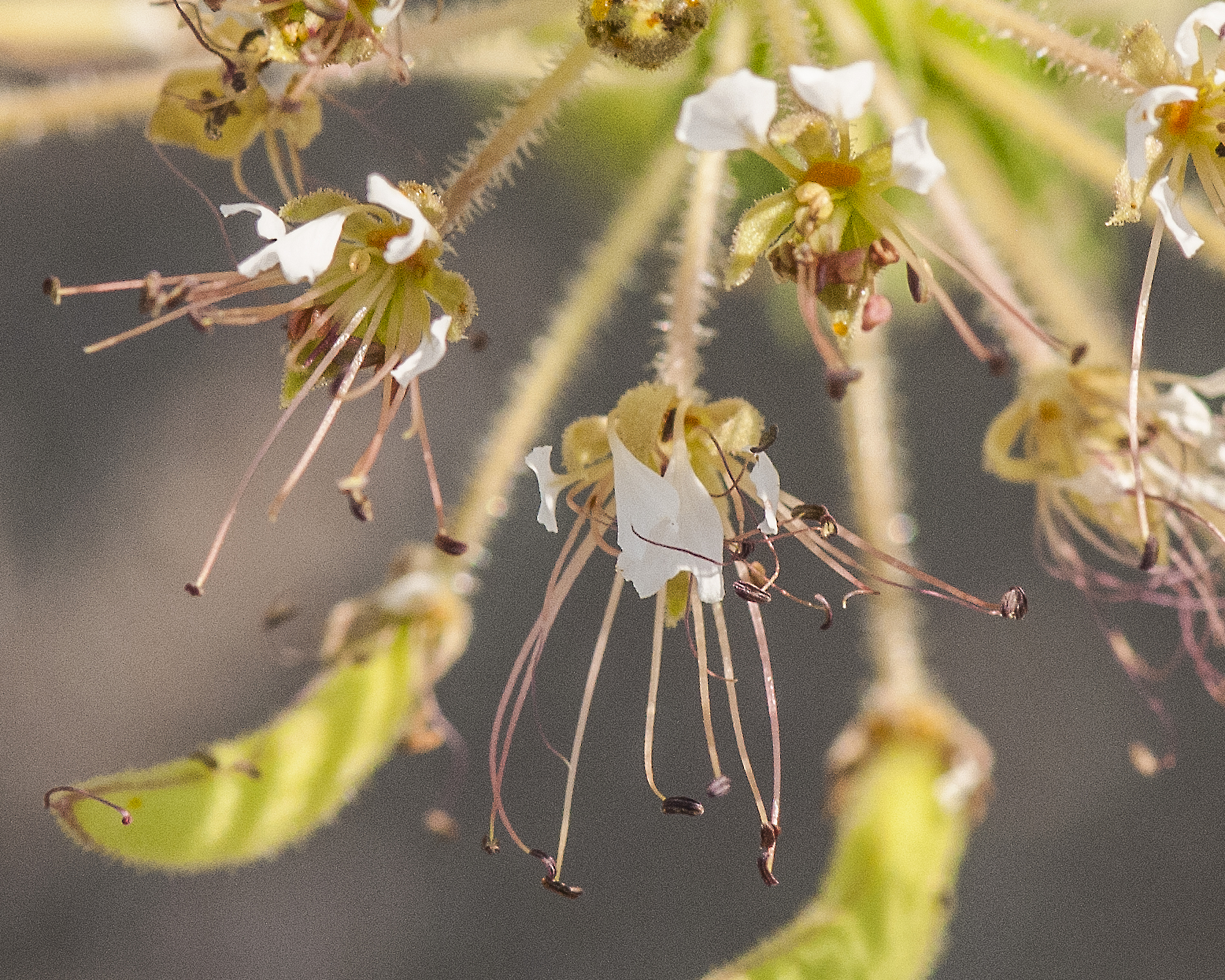
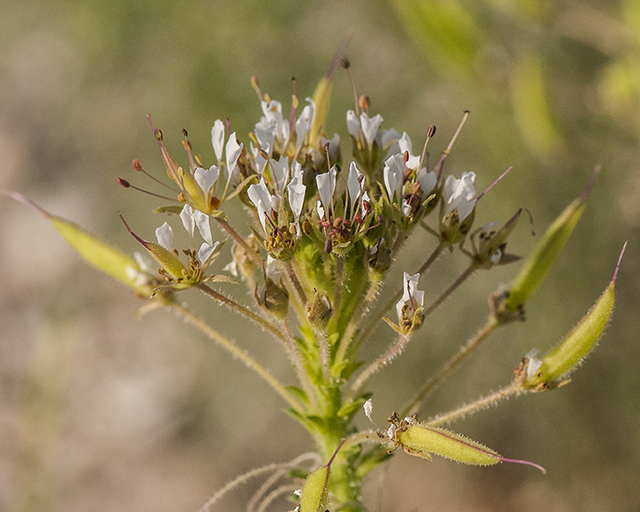
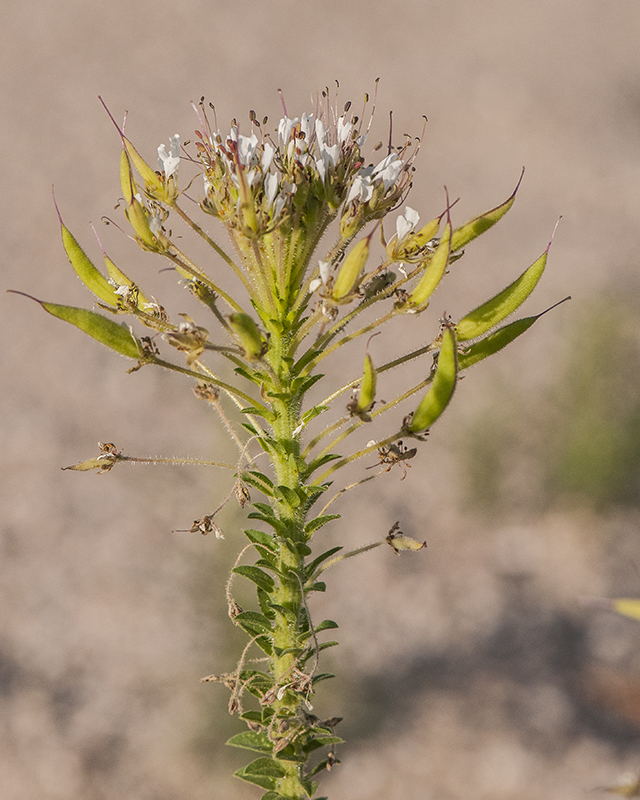
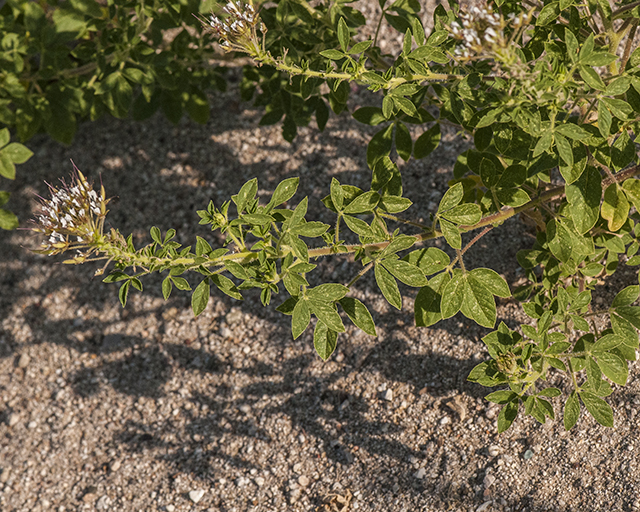
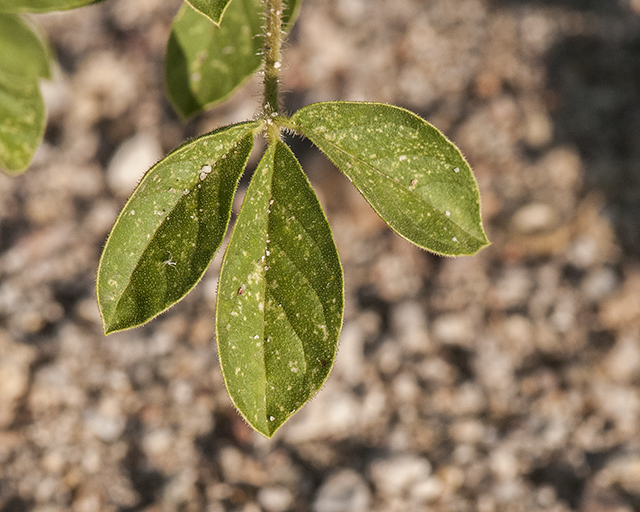
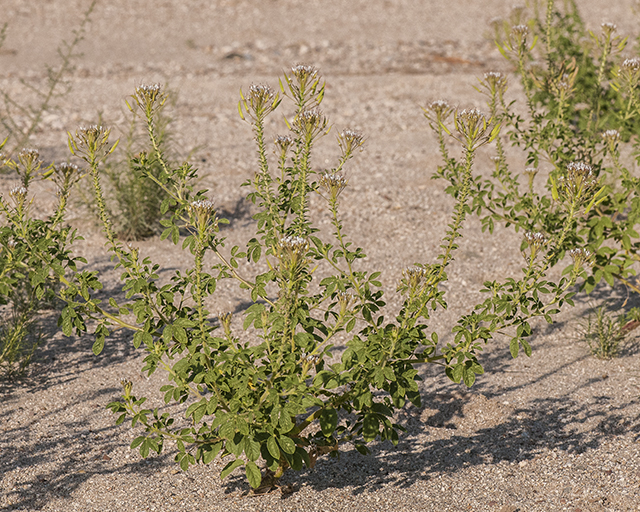 With bee!
With bee!
